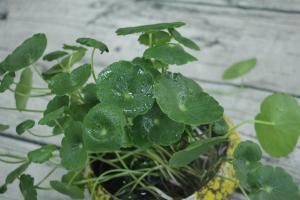Do Rubber Tree Plants Like Full Sun?
When it comes to taking care of rubber tree plants, one of the most common questions is whether they prefer full sun or not. The answer to this question is not as simple as a yes or a no, as it depends on several factors that can affect the growth and health of the plant.
Understanding Rubber Tree Plants
Rubber tree plants are native to tropical regions in Southeast Asia and are known for their large and glossy leaves. They belong to the Ficus genus, which includes other popular houseplants such as the fiddle leaf fig and the weeping fig.
One of the key characteristics of rubber tree plants is that they can grow quite tall, up to 100 feet in their native habitat. However, when grown as houseplants, they typically reach a maximum height of 6 to 10 feet. They can be grown in a range of lighting conditions, but their preferences vary depending on the stage of growth.
Lighting Needs of Rubber Tree Plants
As mentioned earlier, the lighting needs of rubber tree plants depend on their growth stage. Here's a breakdown of their lighting preferences:
When Young:
Young rubber tree plants prefer bright, indirect light. They can tolerate some direct sunlight in the morning or late afternoon, but too much direct sun can cause the leaves to scorch and turn brown. To keep them healthy, keep them near a window that receives filtered light or provide them with artificial light if necessary.
When Mature:
As rubber tree plants mature, they can tolerate more direct sunlight. However, too much direct sun can still damage their leaves, so it's best to keep them in a location that receives bright, indirect light for most of the day. They can tolerate a few hours of direct sunlight in the morning or late afternoon.
Tips for Growing Rubber Tree Plants
Here are some additional tips to help you grow healthy and beautiful rubber tree plants:
Watering:
Water your rubber tree plant when the top inch of the soil feels dry to the touch. Make sure not to overwater as they are susceptible to root rot. Water less in winter when they are in their dormant stage.
Fertilizing:
Feed your rubber tree plant with a balanced, all-purpose fertilizer every two weeks during the growing season. Do not fertilize during the winter months.
Potting:
Repot your rubber tree plant every two years to provide it with fresh soil and more space to grow. Use a well-draining soil mix and a pot that is one size larger than the previous one.
Pruning:
If your rubber tree plant becomes too tall or leggy, you can prune it to encourage bushier growth. Cut back the top of the plant to the desired height, and new growth will form below the cut. You can also remove any yellow or brown leaves to promote healthy growth.
Conclusion
In summary, the lighting needs of rubber tree plants vary depending on their growth stage. Young plants prefer bright, indirect light, while mature plants can tolerate more direct sunlight. However, it's important to avoid exposing them to too much direct sun, as it can damage their leaves. By following these tips and taking good care of your rubber tree plant, you can enjoy a beautiful and healthy houseplant for years to come.

 how many times do yo...
how many times do yo... how many planted tre...
how many planted tre... how many pine trees ...
how many pine trees ... how many pecan trees...
how many pecan trees... how many plants comp...
how many plants comp... how many plants can ...
how many plants can ... how many plants and ...
how many plants and ... how many pepper plan...
how many pepper plan...





























